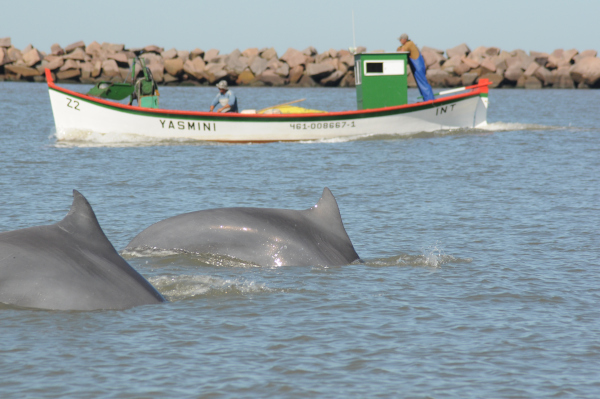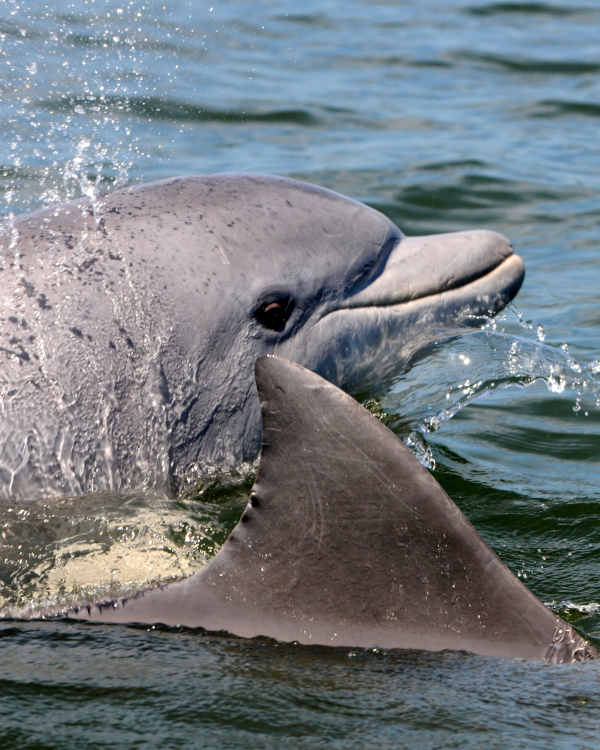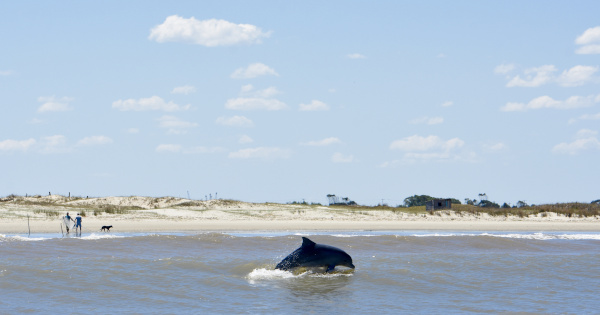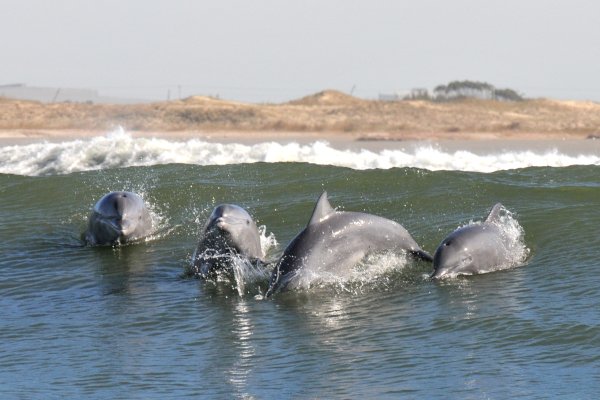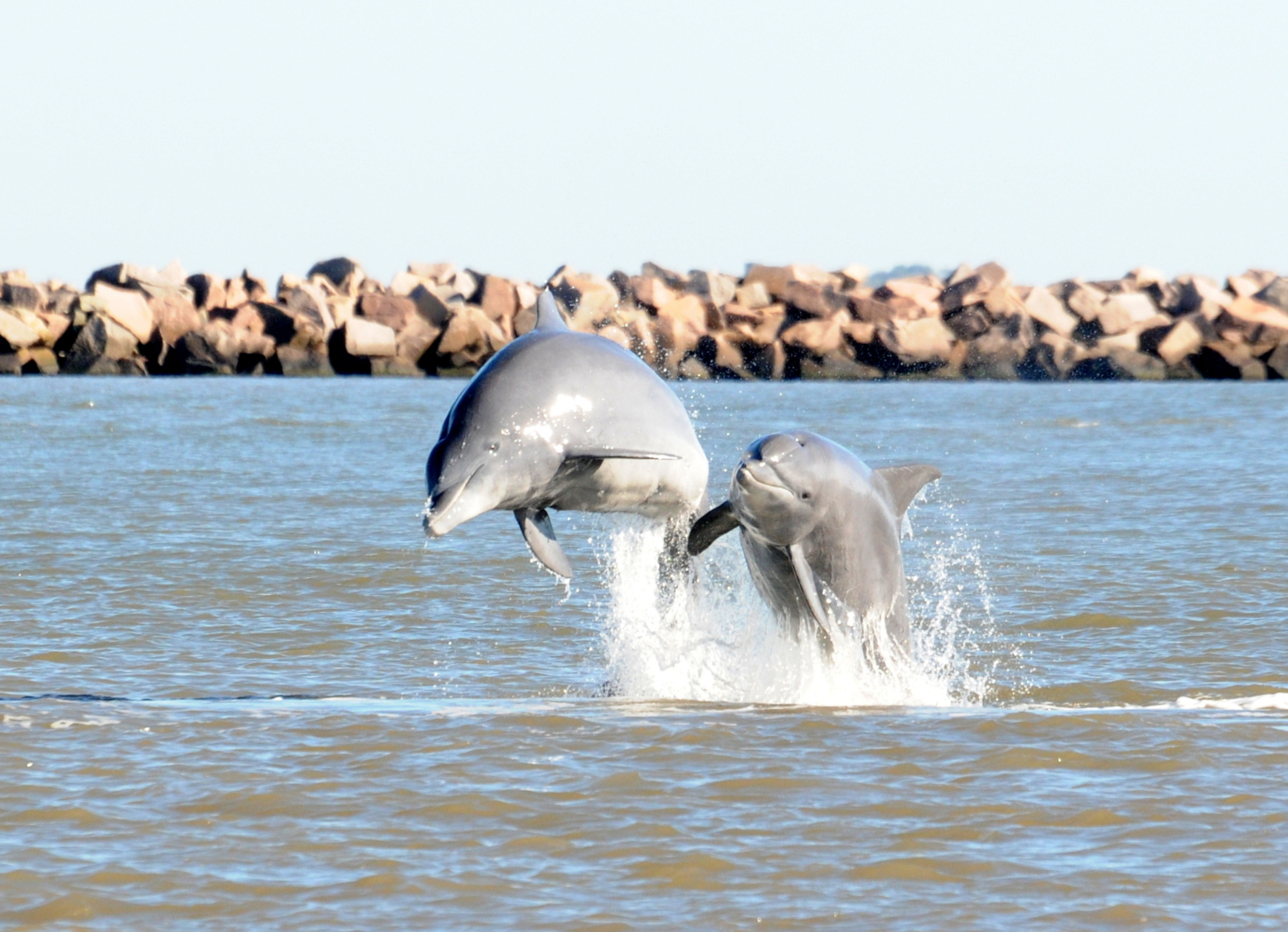Identifying threatened populations and quantifying their vulnerability is crucial for establishing priorities for conservation and providing robust information for decision- making. Lahille’s bottlenose dolphin (Tursiops gephyreus) occurs in low numbers and is restricted to coastal waters of Western South Atlantic, from southern Brazil to Argentina. Abundance estimates suggests a maximum total population size of 600 individuals and the species is considered vulnerable to extinction according to criteria of the International Union for Conservation of Nature (IUCN). Due to its very coastal distribution, Lahille’s bottlenose dolphin has been long subjected to by-catch mortality in gillnet fisheries in coastal waters of southern Brazil.
Researchers from the Marine Megafauna Ecology and Conservation Laboratory (ECOMEGA) have just published the scientific article entitled "Dynamics and viability of a small, estuarine-resident population of Lahille's bottlenose dolphins from Southern Brazil". This article was part of the doctoral thesis of Pedro Fruet, in the Graduate Program in Biological Oceanography at the Federal University of Rio Grande-FURG, Brazil, under the guidance of Professors Eduardo Secchi (FURG) and Luciana Möller (Flinders University, Australia) in a cotutelle regime with dual degree. Flinders University provided a fee waiver as part of Pedro’s Ph.D. cotutelle agreement between this university and FURG. This agreement is within the scope of the Capes PrInt Program (public notice 041/2017). The study received financial support from the German Non-Governmental Organization, YAQU PACHA and it was also partially funded by the Brazilian Long-Term Ecological Research Program (PELD) from CNPq (Proc.441492/2016-9), and the Fundação de Amparo à Pesquisa do Estado do Rio Grande do Sul (Proc. 16/2551-0000102-2).
The article describes the dynamics and evaluates the viability of the small population of Lahille’s bottlenose dolphin – estimated at around 90 individuals - that uses the Patos Lagoon estuary and adjacent marine coast. Averaged annual mortality in fishing nets is around 5 dolphins, with important variation between years. Adult males and juveniles/subadults of both sexes are the most affected groups. Different scenarios of mortality in fishing gear were evaluated in order to project possible demographic trends and determine the risk of decline over a 60-year period (equivalent to 3 generations of this species). The authors found an optimistic prognosis for the next 60 years, assuming that the current accidental mortality rate in fishing gear remains constant. However, they stress the importance of mature females to the population, and that the removal of at least one of them each year would be enough to trigger a population decline of up to 2.3% per year. The viability of the population would be substantially improved if the survival could be increased. This may be achieved through the recently implemented dolphin protection area, which prohibits gillnet fisheries in the core area of this population.
If the protection area reduces the entanglement rates of the most impacted life-stages (juvenile/sub-adult dolphins), there would be a substantial chance of this population to increase. This is desirable as it may promote connectivity with adjacent populations, hence gene flow, which in turn would increase genetic diversity and enhancing the ability of bottlenose dolphins in southern Brazil to cope with environmental change and potential disease outbreaks.
